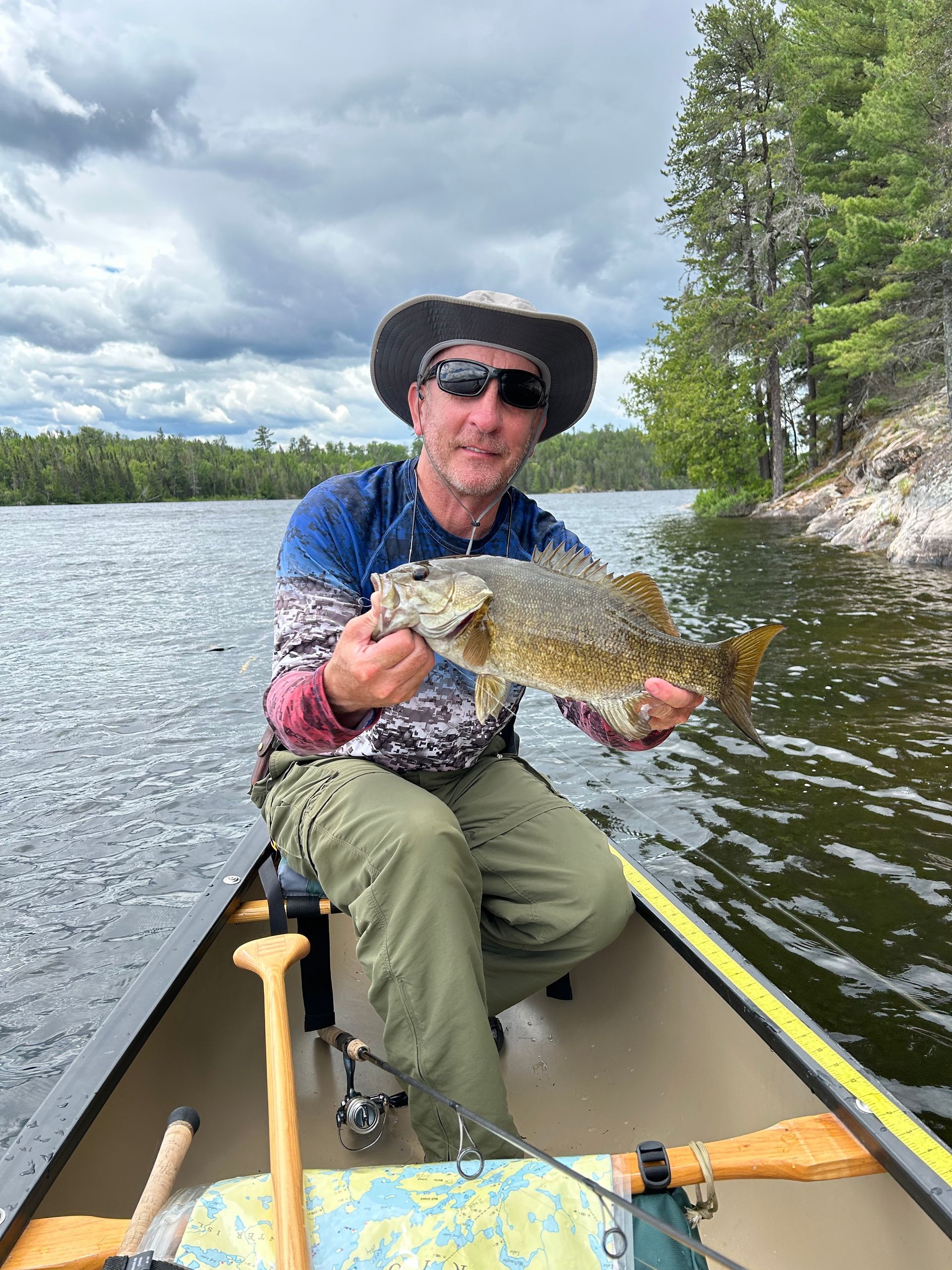Boundary Waters Fishing Report – Bass Flies & Camping Fun
Bass on the fly, beautiful canoe country, and the Northern Pike that got away.
If you’re looking for an unforgettable blend of fishing, camping, and wilderness solitude, our 5-day canoe trip through the Boundary Waters Canoe Area (BWCA) delivered all of that—and more. This detailed Boundary Waters fishing report shares how we navigated through glassy lakes, battled trophy bass, reeled in hungry northern pike, and ended each day by a crackling fire under the stars.
Paddling into the Wilderness
Our journey began at the entry point near Ely, Minnesota, where we packed everything into two canoes: ultralight tents, fly rods, spinning gear, and enough freeze-dried meals to fuel five full days of off-the-grid adventure. As we pushed off and disappeared into a maze of lakes and portages, it didn’t take long for the silence of the wild to set in.
Each lake we entered seemed more remote than the last. By the time we reached our base camp on Day 2—tucked into a rocky cove lined with pines—we hadn’t seen another soul in over 24 hours. That kind of solitude is exactly what the Boundary Waters is all about.
Bass Flies That Got Hammered
Smallmouth bass were the undeniable stars of the trip. On lakes with rocky points and submerged timber, we used topwater bass flies like foam poppers, deer hair divers, and even simple black woolly buggers. The explosive topwater strikes made us laugh out loud—especially during the morning bite when bass were feeding aggressively in the shallows.
If you're planning a BWCA fishing trip, pack a 6- or 7-weight fly rod and bring plenty of floating line. Bass in these waters are strong and wild, and the action can be nonstop.
Walleye at Sunset
As dusk settled in each evening, we switched to jig heads tipped with soft plastics or leeches and targeted deeper shelves. That’s when the walleye bite came alive.
We caught several keepers (within BWCA regulations), and nothing beats fresh walleye over an open fire. Just add a little shore lunch seasoning and a splash of oil in the pan—perfection.
Northern Pike Surprises
No Boundary Waters fishing report would be complete without mentioning the toothy torpedoes that smashed our baits when we least expected it. Northern pike lurked in the weedy bays and along drop-offs. We caught them on spoons, spinnerbaits, and even accidentally on bass flies.
If you're fly fishing, make sure to bring a wire leader or risk losing your best flies to these underwater predators.
Campfire Nights & Loons at Dawn
Camping in the Boundary Waters is as wild and beautiful as it gets. Each evening ended with stories around a fire and the eerie, beautiful calls of loons echoing across the lake. We had no cell service, no crowds, and no distractions—just the rhythm of paddling, fishing, and reconnecting with nature.
Gear That Made the Difference
Here’s what we highly recommend for a trip like this:
- Ultralight spinning rods & medium fly rods
- Dry bags to protect clothing and electronics
- Portable water filter (we used a gravity-fed model)
- Map & compass (don’t rely on GPS)
- Permits (required for the BWCA—get them in advance)
Final Thoughts: Why We’ll Be Back
This trip was more than just a fishing expedition—it was a reset. We came for the fish, but we left with memories of wild places, strong pulls on the line, and complete peace. If you're considering a wilderness fishing trip, the BWCA should be at the top of your list.
Boundary Waters fishing is about more than just catching fish. It’s about the journey, the solitude, and the joy of exploring one of the last true wildernesses in America.




